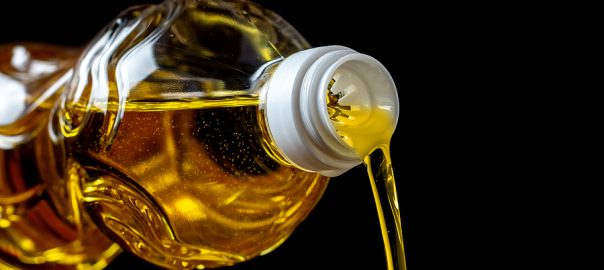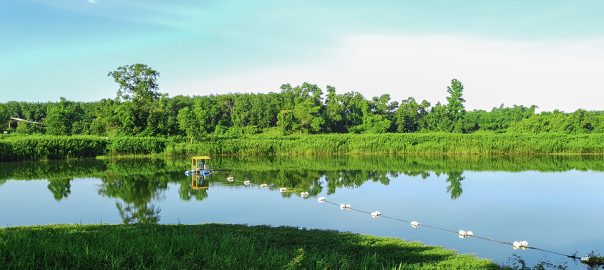
Have you seen all of the TikToks where wastewater treatment plant operators say that the only thing people should be flushing or putting down their drains are the three P’s: Poop, Pee, and Paper. It’s all part of a push to educate people and stop some of the problems faced by wastewater treatment plants.
FOG (fats, oil, and grease) are one of the biggest problems in wastewater treatment. Whether it’s inadvertent or deliberate, people pour cooking oil, meat drippings, sauces, melted butter/margarine/shortening, and dairy products down their sinks.
It may seem fine, but in a sewer line or piping, the oils cling to the sides of the pipe and mix with other items that get flushed, such as baby wipes, tampon applicators, condoms, plastic wrappers, etc. It creates a fatberg that can stop the flow of wastewater in a sewer.
Wastewater treatment plants have to have a plan in place to handle this problem. In addition to educational efforts, fats, oil, and grease screening is one of the essential steps. Explore the different ways your district should be handling FOG in wastewater.
The Importance of Keeping FOG Out of Wastewater
While the average person may not think much of the chicken grease that goes down their drain, it becomes a nightmare over time to wastewater districts. In 2020, a 1.65-ton fatberg was pulled from a sewer in Leeds, England.
That’s not even the largest in known history. A 130-ton fatberg was found blocking a sewer tunnel in London back in 1997. It measured around 820 feet long and took workers around a week to remove it, costing the city around £1 million to do so.
That’s still not the largest. Birmingham, England, was found to have a massive fatberg that weighed over 300 tons and was more than half a mile long. Thames Water spent an estimated $1 million to remove it over a span of weeks.
If you still want to hear about even bigger fatbergs, Cardiff, Wales, had an 881-ton fatberg in the city sewers. The fatberg was estimated to be the equivalent of 133 African elephants in size and caused other sewer lines to collapse.
The United Kingdom isn’t the only country dealing with fatbergs. In the U.S., In Baltimore, a fatberg created a sewage overflow that led to almost 1.2 million gallons of raw sewage being released into Jones Falls. The fatberg was blocking 85% of the sewer main.
A year later, Detroit’s Macomb Public Works discovered a fatberg that was 100 feet long and more than 10 feet wide. To educate the public, the city put a section of the fatberg on display at the Michigan Science Center. What was in this fatberg? Lots of syringes, candy wrappers, and tampon applicators.
Not only can fatbergs block the flow of wastewater and lead to overflows and EPA fines, but they can also destroy lines in a sewer system and require costly replacement. Plus, the amount of manpower, overtime, and equipment needed to break up and remove sections of fatbergs is costly. It can drastically drive up costs, and those increases can be passed on to people within a sewer district.
Start by Educating the People in Your District
Ads on local news stations are one way to educate people in your district. You should also look at social media as a powerful tool to spread the message. Facebook, Twitter, TikTok, and even Reddit can help you get the word out. Pictures or videos of fatbergs and FOG deposits at your wastewater treatment plant present vivid images to show what happens.
To prevent it, whether they’re at work or home, people need to stop washing food waste down the drain. Use a paper towel to wipe as much food, oil, and grease out of a pan or dish before washing it. Grease can go into an unused glass jar or can and then be disposed of in the trash.
Restaurants should have grease traps installed to capture FOG and keep it from going into the sewer lines. Grease traps may be mandatory in your city or state, so any restaurant owner should make sure a grease trap is installed and maintained properly. Captured oils can get hauled away to plants that convert them into biodiesel and products like candles and soap.
In addition to FOG precautions, area residents need to make sure they’re not flushing improper items. Flyers reminding people what should and shouldn’t get flushed is useful. An updated online guide is also important. Make it clear that items like flushable wipes and flushable cat litter that claim to be flushable are definitely not something that should go down the toilet instead of into the trash.
Your Wastewater Treatment Plant Needs Screens That Remove Scum, Sludge, and Grease
Lakeside Equipment is an expert in wastewater treatment equipment that removes FOG. Wastewater screens can be useful in getting grease, oil, and fat out of the wastewater where it can then be sent to a landfill, composted, or incinerated.
A Lakeside Raptor Fine Screen is one of the best options and is trouble-free for many years. Maintenance needs are minimal. It completes these steps while screening FOG.
When wastewater levels reach the designated point, the Raptor Fine Screen’s rake arm starts moving to capture scum, sludge, and FOG.
After it’s completed its revolution, the material that’s been raked goes into a collection area.
The rake arm reverses direction and goes through a hinged comb to clean out any trapped materials.
The waste materials then get pushed using a screw conveyor through the transport tube to be washed, compacted, dewatered, and moved to a container to be transported to another facility or area.
The Raptor Fine Screen has optional features that may suit your wastewater treatment plant’s needs. One of the most important is weather protection which protects against temperatures as low as -13ºF. You can also purchase it in a pre-engineered tank if necessary.
The stainless-steel design doesn’t rust or corrode easily. It’s especially good at removing debris and grease that can plug up pipes and impact flow rates. FOG and other debris can be dewatered, washed, and compacted to reduce the weight by as much as 67% and overall volume gets cut in half, which lowers the amount of material you have to dispose of.
When your district is experiencing high levels of fats, oil, and grease throughout the year or seasonal increases in fatty foods like fried turkey or prime rib roasts, be prepared for the increase in FOG. Heighten educational messages and make sure your wastewater treatment plant is prepared to remove FOG using wastewater screens.
Lakeside Equipment is an expert in FOG removal. Talk to us to discuss your district’s problems and we’ll work with you to come up with the best options.





